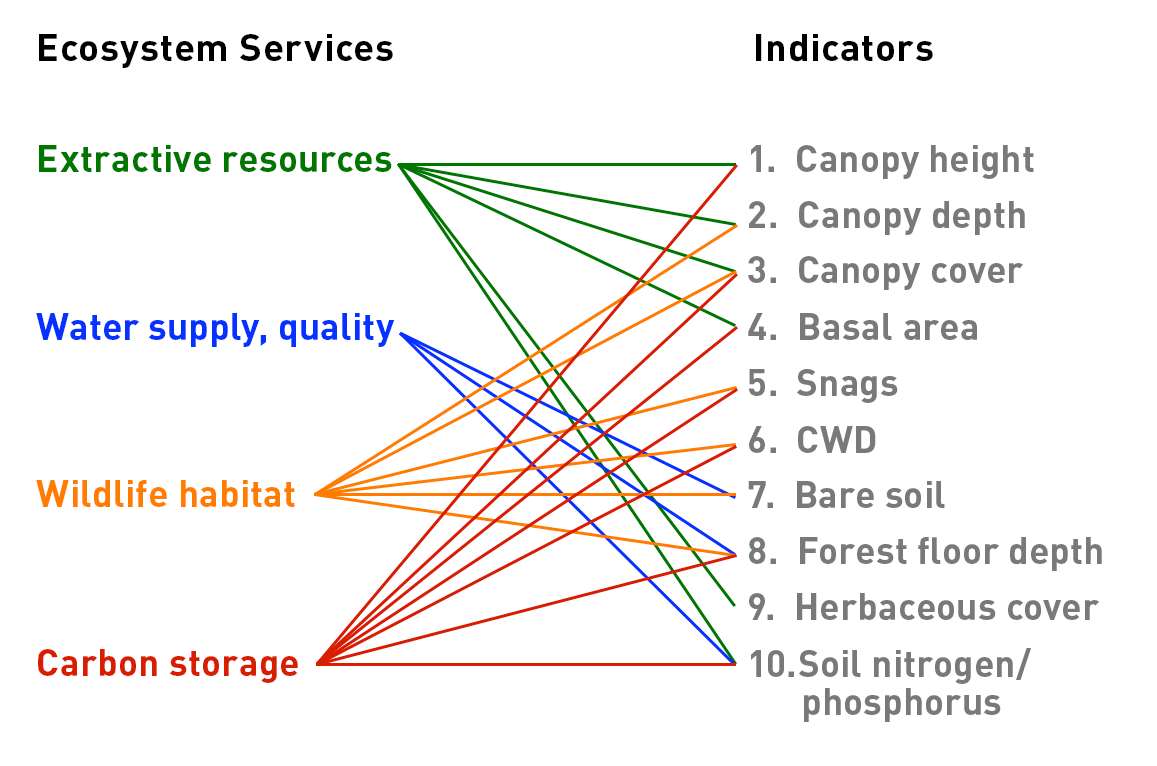Indicators of Forest Ecosystem Functions for Valuing Land Based Mitigation of Agricultures Environmental Impacts
Norton Siano Ribeiro de Freitas and Daniel Markewitz
The University of Vermont
This project focuses on evaluating how ecological indicators can be utilized to demonstrate the effects of land use alterations on forest ecosystem functions. This is critical because the expansion of agriculture may have influenced climate to an important degree.

Ecosystem services and their associated indicators (Adapted from: Forest Ecosystem Rapid Assessment Scorecard (FERAS), Users Guide June 2007, Version 1.5, D. Markewitz, S.Madson, T. Hinckley.D.B. Warnell School of Forestry and Natural Resources, The University of Georgia)
Ecosystem services can be defined as any attribute of the natural system that is perceived as beneficial to human society. Ecosystem services for forests can include: climate regulation, disturbance regulation, water regulation, water supply, erosion control, soil formation, carbon storage, nutrient cycling, waste treatment, biological control, biological diversity, food production, raw material production, genetic resources, recreation, and cultural usage. Despite our recognition of these important ecosystem services, it is still difficult for us to quantitatively value these services, particularly in one forest type or another or under different forest management alternatives.
The concept of ecosystem function has triggered strong international interest in rainforest nations where the forces of globalization and the market economy have had a significant expansion of agriculture and food production. We have studied spatial and temporal trends of growing crops for fuel and using trees for storing carbon in economic frontier areas of the São Paulo portion of the Atlantic Rainforest.
In addition, we developed a framework to assess the potential benefits for creating working forests near stream areas as riparian buffers. The framework is demonstrated using geographic information systems from São Paulo at the landscape/watershed scale. The results demonstrate that ecological indicators add information that is of direct applicability for climate change strategies and can be used in testing the functional value of native forest patches in terms of carbon storage, flood and erosion control and waste absorption capacity.